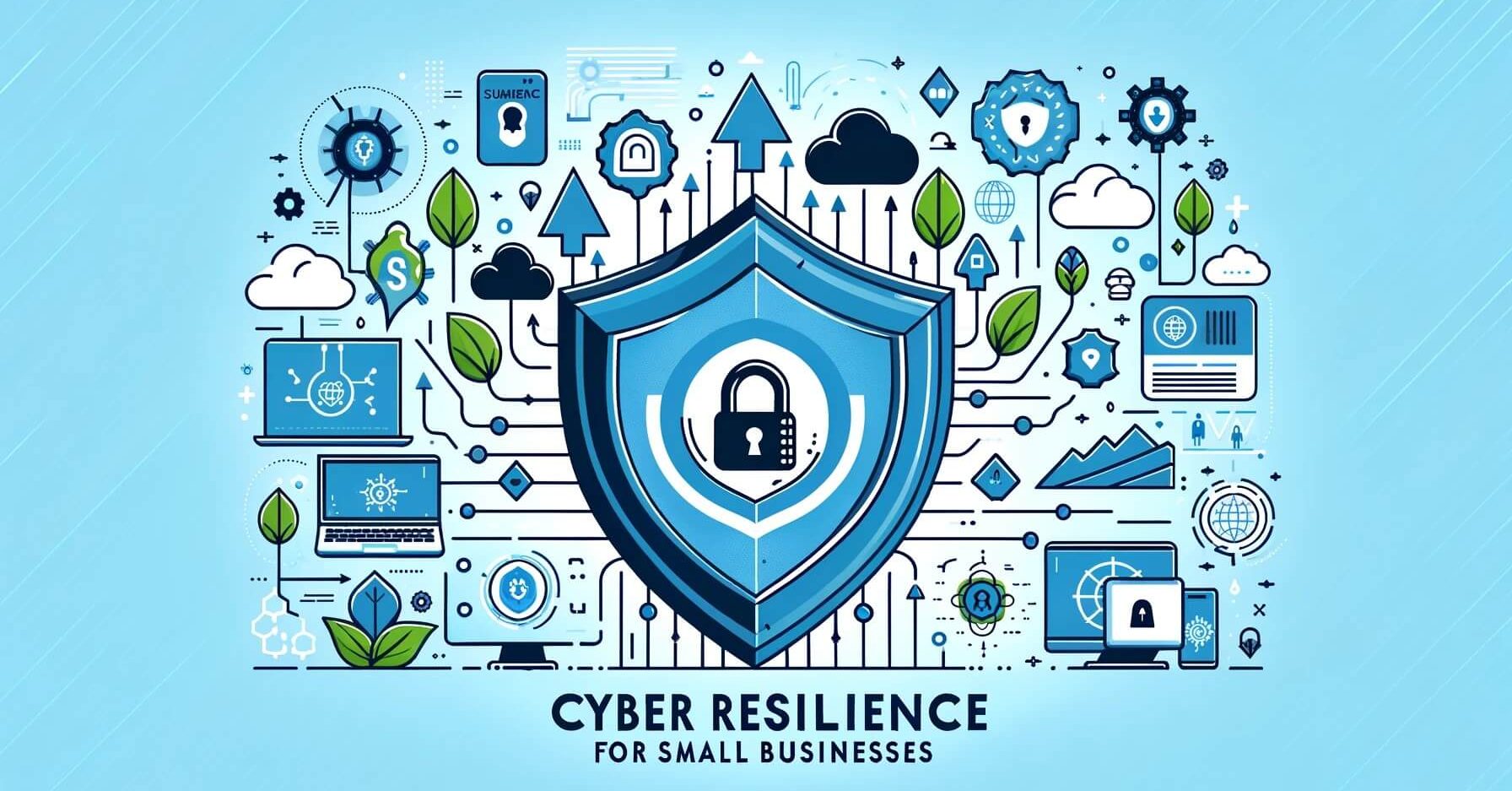For owners of small businesses and solopreneurs, cyber resilience might not always be at the forefront of daily concerns. The myriad responsibilities of running a business usually rank higher. Yet, the expectation for digital technology to function seamlessly is universal. Computers should run smoothly, emails must be reliable, and the privacy of company-sensitive information and customer data is presumed.
However, security isn’t something to be taken for granted. Statistics reveal that one in two small businesses face cyber incidents every year. This fact underscores the critical need for cyber resilience as an integral component of overall business strategy, not just for safeguarding data but as a foundation for sustainable growth and reliability in the digital age.
Understanding Cyber Resilience
The Essence of Cyber Resilience: Expanding the idea of cyber security, which focuses on prevention, cyber resilience encompasses the ability to prepare for, respond to, and recover from cyber incidents. It’s about ensuring your business’s capacity to run in the face of a cyber attack.
Key Components:
- Preparation: Establishing strong preventative measures, including regular software updates, secure network configurations, and employee training programs.
- Response: Having a clear, actionable plan in case of a cyber incident that includes communication protocols and steps to mitigate damage.
- Recovery: Procedures to restore lost or compromised data and return to normal operations, leveraging backups, and learning from the incident to strengthen future resilience.
The Role of Culture: Building a culture of cyber resilience where every team member recognizes their role in maintaining security is crucial. Encourage a mindset where small business cybersecurity is everyone’s responsibility, not just the IT department’s.
Collaboration and Resources: A business might not have an extensive budget or in-house expertise, but leveraging partnerships with IT and cybersecurity services firms can provide valuable support. Additionally, resources from organizations like CISA, NIST, and the SBA can offer guidance tailored to small businesses’ needs.
Continuous Improvement: Cyber resilience is not a one-time effort but a continuous cycle of improvement. Regularly review and update your cyber resilience strategies to adapt to new threats and technological advancements.
Real-world example
In a case study provided by NIST (National Institute of Standards and Technology), a small hotel business experienced a significant cybersecurity breach when the CEO’s email account was compromised through a sophisticated phishing attack. This incident not only exposed sensitive business information but also highlighted the vulnerabilities in their existing cybersecurity measures. The attackers utilized social engineering tactics to gain unauthorized access, posing as a trusted source to deceive the CEO into revealing login credentials.
The aftermath of the breach led the hotel to reevaluate and strengthen its cybersecurity framework. They implemented multi factor authentication for all email accounts, conducted comprehensive cybersecurity awareness training for all staff, and established more robust incident response protocols.
These measures significantly improved the hotel’s cyber resilience, ensuring better protection against future phishing attempts and other cyber threats. The case underscores the importance of continuous vigilance, employee education, and the adoption of advanced security measures to safeguard against the evolving landscape of cyber threats.
Actionable steps
Depending on the IT and Security resources available in-house, a small business owner may collaborate with a cybersecurity professional or acquire specialized services for better results.
1. Conduct a Cybersecurity Assessment: Begin with understanding where your business stands regarding cybersecurity. Use free tools and resources provided by organizations like CISA (Cybersecurity & Infrastructure Security Agency) to assess your vulnerabilities.
2. Develop a Cybersecurity Plan: Based on the assessment, create a tailored cybersecurity planhttps://bogdancarlescu.com/blog/cybersecurity-for-small-businesses-guide/. This should cover everything from securing your network to data protection protocols. The Federal Communications Commission (FCC) offers a Cyberplanner tool that can be useful in creating a custom plan.
3. Implement Basic Cyber Hygiene Practices: Focus on simple yet effective measures such as using strong passwords, enabling multi-factor authentication, regularly updating software, and backing up data. NIST provides guidelines for basic cybersecurity practices.
4. Educate Your Team: Awareness is key. Provide regular training to your team on recognizing phishing attempts, safely handling data, and following best cybersecurity practices. The US Small Business Administration (SBA) offers training resources that can be leveraged.
5. Prepare for Incidents: Have an incident response plan in place. This includes steps to take in the event of a data breach, who to contact, and how to communicate with stakeholders. Resources from CISA can guide you in developing an incident response strategy.
6. Stay Informed: Cyber threats evolve rapidly, so staying informed about the latest threats and trends is crucial. Subscribe to cybersecurity newsletters, attend webinars for business owners, and participate in local cybersecurity forums.
Conclusion
In the digital age, cyber resilience is not just an IT concern but a fundamental business imperative, especially for small businesses and solopreneurs. By understanding the core principles of cyber resilience, learning from real-world examples, and implementing actionable steps, you can safeguard your business against cyber threats and ensure its growth and sustainability.
The goal isn’t just to survive in the face of cyber challenges but to thrive, turning potential vulnerabilities into strengths. Embrace cyber resilience as a key component of your business strategy, and let it be the foundation upon which you build a secure, resilient, and successful future.
